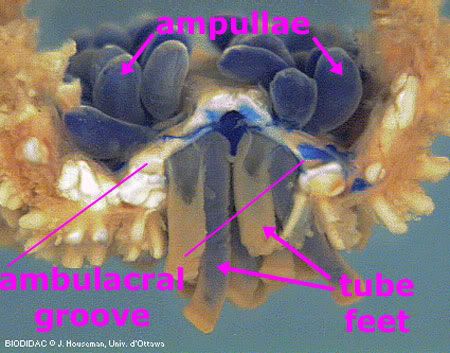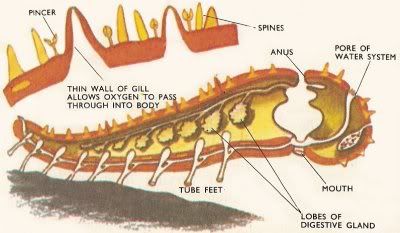
Sunday, May 10, 2009
|
|
37th Common
|
|
Join Date: Mar 2006
Posts: 1,514
Thanks: 1,053
Thanked 1,681 Times in 873 Posts
|
|
 Invertebrate Short Notes
Invertebrate Short Notes
Flame cell
A flame cell is a specialized excretory cell found in most "lower" freshwater invertebrates, including Nematode, Platyhelminthes (except the tubellarian order Acoela), flatworms, rotifers and nemerteans; these are the simplest animals to have a dedicated excretory system. Flame cells function like a kidney, removing waste materials. Bundles of flame cells are called protonephridia.
The flame cell has a nucleated cell body, with a "cup-shaped" projection, with flagella covering the inner surface of the cup. The beating of these flagella resemble a flame, giving the cell its name. The cup is attached to a tube cell. The inner surface of the tube cell is coated in flagella. The beating of the cilia and flagella help move liquid through the tube cell. The tube opens externally through a nephropore, or, in the trematoda, into an excretory bladder. The function of these cells is to regulate the osmotic pressure of the worm, and maintain its ionic balance. Microvilli in the tube cell may be used to reabsorb some ions.
Tube Feet
Tube feet are the many small tubular projections found most famously on the oral face of a sea star's arms, but are characteristic of the water vascular system of the echinoderm phylum which also includes sea urchins, sand dollars and sea cucumbers and many other sea creatures.
Tube feet function in locomotion and feeding. The tube feet in a sea star are arranged in grooves along the arms. They operate through hydraulic pressure. They are used to pass food to the oral mouth at the center, and can attach to surfaces. A sea star that is overturned simply turns one arm over and attaches it to a solid surface, and levers itself the right way up.
Tube feet allow these different types of animals to stick to the ocean floor and move very slowly.
The tube feet also help the starfish in reproduction. Tube feet consist of two parts: ampulla and podia. Ampulla contain both circular muscles and longitudinal muscle, whereas the podia contain the latter only. Thus the podia use suction to attach to the substratum.



|